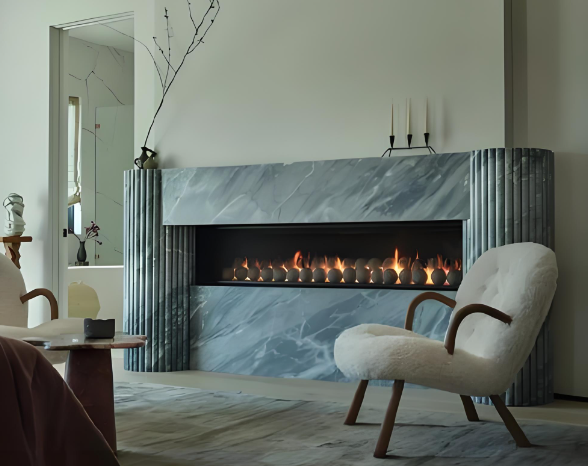Table of Contents
l Over-relying on a Single Light Source
l Using Lighting Fixtures That Are Too Big or Small for the Room
l Mismatched Color Temperature
l Ignoring Lighting Design for Small Spaces
l Using Too Bright of a Ceiling Light
l Incorrect Placement of Light Switches
l Neglecting the Use of Natural Light
l Lack of Layered Lighting Design
l Choosing Low-Quality Lighting Products
l Ignoring Lighting's Impact on Ambiance
Introduction: The Key to Perfect Lighting Is in the Design and Selection
Lighting plays a crucial role in home and commercial spaces,affecting aesthetics and mood. Nonetheless, a lot of people commit basic lighting errors that might cause discomfort, inefficiency, or even safety risks.
Our specialty at Togalonn is providing superior lighting solutions that elevate any area. This post will discuss 10 typical lighting errors and offer professional advice on how to steer clear of them for a well-lit space.

1. Over-relying on a Single Light Source

Common Mistake:
A common error made by many people is to rely too heavily on one main source of illumination, like a big chandelier or ceiling light. Even though it would seem like a straightforward fix, this frequently results in gloomy areas and uneven lighting, particularly in bigger or multipurpose spaces. Additionally, using just one light eliminates the ability to experiment with varied lighting effects, such as using softer lighting for relaxation and stronger lighting for work.
How to Optimize:
Avoid relying on a single light source by adopting a layered lighting design. Include a combination of general lighting (e.g., chandeliers or ceiling lights), task lighting (e.g., table lamps or desk lamps), and ambient lighting (e.g., floor lamps or wall sconces). This will ensure that every area of the room is properly lit and provide more versatility in terms of both lighting function and ambiance.
2. Using Lighting Fixtures That Are Too Big or Small for the Room

Common Mistake:
Many people choose lighting fixtures that are either too big or too small because they fail to consider the room's size. While too-small lighting in a large room won't offer enough light, leaving the space feeling dark, too-large fixtures in a small room might feel overwhelming and constrict the space.
How to Optimize:
When selecting lighting fixtures, make sure they’re appropriate for the room’s size. Smaller rooms should have appropriately sized, more subtle fixtures, while larger rooms may require bigger, more powerful lights to ensure adequate brightness. For large rooms, you can also use multiple smaller fixtures to fill the space and provide even lighting.
3. Mismatched Color Temperature

Common Mistake:
An important consideration in lighting design is color temperature. But a lot of people don't adjust their lights' color temperature to the room's intended use. For example, employing cold light (blue-toned) in a bedroom can provide a chilly, unwelcoming atmosphere, while warm light (yellow-toned) in a kitchen or office might make the area feel overly comfortable and unproductive.
How to Optimize:
Choose the right color temperature for each room. Warm white light (2700K-3000K) is ideal for bedrooms, living rooms, and dining areas where you want a cozy, relaxed atmosphere. Cooler white light (4000K-5000K) works well in kitchens, bathrooms, and workspaces where clarity and focus are important. You may also want to consider dimmable lights to adjust the color temperature to fit your changing needs.
4. Ignoring Lighting Design for Small Spaces

Common Mistake:
In small spaces like small bedrooms or bathrooms, many people rely on a single overhead light or central ceiling light, which can make the room feel even smaller and more cramped.
How to Optimize:
For small spaces, opt for wall-mounted lights, recessed lighting, or track lighting to save space while providing adequate lighting. These options help avoid the bulky, central light fixture that can dominate the room. Additionally, consider using mirrors and reflective surfaces to bounce light around and make the space feel larger and brighter.
5. Using Too Bright of a Ceiling Light

Common Mistake:
Overly bright ceiling lights can cause glare and harsh shadows, making the space feel uncomfortable or uninviting. In rooms like living rooms or bedrooms where relaxation is important, too bright of a light can disrupt the cozy atmosphere.
How to Optimize:
Select lighting fixtures with the optimum amount of brightness, and if possible, use dimmable lights so you may change the intensity to your preference. In order to spread the brightness and create a more balanced atmosphere in the space, you can also mix ceiling lights with other lighting sources, like lamps or accent lights.
6. Incorrect Placement of Light Switches

Common Mistake:
Sometimes, light switches are installed in inconvenient locations, making it difficult to turn the lights on or off when you enter or leave a room. For instance, placing the switch far from the entrance or near a difficult-to-reach area can be a hassle.
How to Optimize:
Position light switches near the entrance to a room or in places where they’re easy to reach. If possible, consider using smart switches or voice-activated lighting systems to make it even easier to control your lights from anywhere in the room.
7. Neglecting the Use of Natural Light

Common Mistake:
Some people neglect the power of natural light and rely too heavily on artificial lighting. This not only increases your energy bills but also leads to a less vibrant and welcoming atmosphere during the day.

How to Optimize:
Maximize the use of natural light by making sure your windows are unobstructed, and use light curtains that allow the sunlight to pour in. Consider placing mirrors or reflective surfaces around the room to bounce natural light, making the space feel brighter and more open.
8. Lack of Layered Lighting Design

Common Mistake:
Using only one type of light source (such as a single ceiling light) can make the room feel flat and uninspiring. A space without layered lighting lacks dimension and may feel static.

How to Optimize:
Include task lighting, accent lighting, ambient lighting, and other lighting types in your design. For instance, utilize task lamps for concentrated work, pendant lights or chandeliers for ambient illumination, and accent lighting (such wall sconces or spotlights) to draw attention to architectural details or artwork.
9. Choosing Low-Quality Lighting Products

Common Mistake:
In an attempt to save money, some people choose low-quality lighting products that may have a short lifespan, poor energy efficiency, and unreliable performance.
How to Optimize:
Invest in high-quality lighting fixtures that are energy-efficient, durable, and provide consistent lighting. Look for products with good reviews, certifications, and reputable brands to ensure longevity and reliability. Quality lighting will also reduce maintenance costs over time and improve the overall lighting experience in your space.
10. Ignoring Lighting’s Impact on Ambiance

Common Mistake:
Many people only consider the functional aspects of lighting and ignore how it affects the mood and atmosphere of a space. Lighting can drastically change the way a room feels, and ignoring its role in creating ambiance can result in a less inviting environment.

How to Optimize:
Consider how lighting can enhance the mood of a room. For example, use soft, warm lights in living rooms and bedrooms to create a cozy, inviting atmosphere. In kitchens or offices, bright, white lights will help improve focus and productivity. By choosing the right lighting for each specific function, you can create a balanced, harmonious environment.
Conclusion: Perfect Lighting Starts with Togalonn

By avoiding the common lighting mistakes outlined above and optimizing your lighting design, you can create a space that is both functional and visually appealing. If you're in search of high-quality lighting products, Togalonn offers a wide range of premium lighting fixtures designed to meet your needs. Visit our website to explore our selection and transform your space with the perfect lighting.

